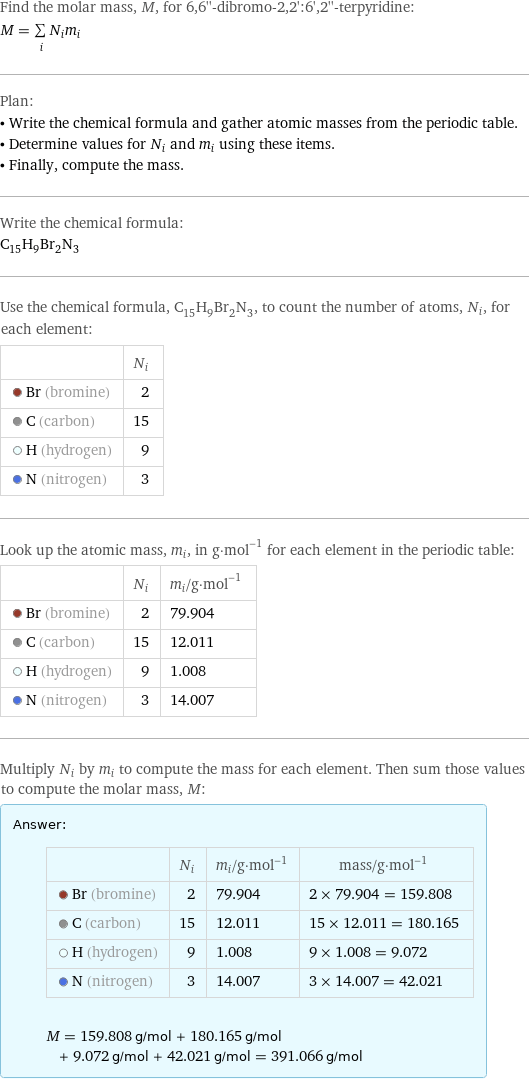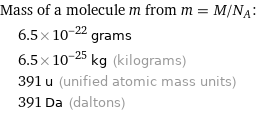Input interpretation

6, 6''-dibromo-2, 2':6', 2''-terpyridine | molar mass
Result

Find the molar mass, M, for 6, 6''-dibromo-2, 2':6', 2''-terpyridine: M = sum _iN_im_i Plan: • Write the chemical formula and gather atomic masses from the periodic table. • Determine values for N_i and m_i using these items. • Finally, compute the mass. Write the chemical formula: C_15H_9Br_2N_3 Use the chemical formula, C_15H_9Br_2N_3, to count the number of atoms, N_i, for each element: | N_i Br (bromine) | 2 C (carbon) | 15 H (hydrogen) | 9 N (nitrogen) | 3 Look up the atomic mass, m_i, in g·mol^(-1) for each element in the periodic table: | N_i | m_i/g·mol^(-1) Br (bromine) | 2 | 79.904 C (carbon) | 15 | 12.011 H (hydrogen) | 9 | 1.008 N (nitrogen) | 3 | 14.007 Multiply N_i by m_i to compute the mass for each element. Then sum those values to compute the molar mass, M: Answer: | | | N_i | m_i/g·mol^(-1) | mass/g·mol^(-1) Br (bromine) | 2 | 79.904 | 2 × 79.904 = 159.808 C (carbon) | 15 | 12.011 | 15 × 12.011 = 180.165 H (hydrogen) | 9 | 1.008 | 9 × 1.008 = 9.072 N (nitrogen) | 3 | 14.007 | 3 × 14.007 = 42.021 M = 159.808 g/mol + 180.165 g/mol + 9.072 g/mol + 42.021 g/mol = 391.066 g/mol
Unit conversion

0.39107 kg/mol (kilograms per mole)
Comparisons

≈ 0.54 × molar mass of fullerene ( ≈ 721 g/mol )

≈ 2 × molar mass of caffeine ( ≈ 194 g/mol )

≈ 6.7 × molar mass of sodium chloride ( ≈ 58 g/mol )
Corresponding quantities

Mass of a molecule m from m = M/N_A: | 6.5×10^-22 grams | 6.5×10^-25 kg (kilograms) | 391 u (unified atomic mass units) | 391 Da (daltons)

Relative molecular mass M_r from M_r = M_u/M: | 391